Archaeology & Ancient History / Rome & the Roman Provinces
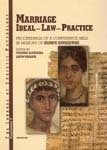
Format: Hardback
Pages: 280
ISBN: 9788391825044
Pub Date: 12 Feb 2006
Imprint: Journal of Juristic Papyrology
Series: JJP Supplements
Description:
The book collects 13 papers delivered at a conference held in Warsaw in April 2004, devoted to the memory of an eminent Warsaw Papyrologist and Romanist, Henryk Kupiszewski. The authors of the book, leading scholars in the field of Legal History, Roman Law and Canon Law studies as well as Papyrology, used different methodological tools, proper for their disciplines, to present the multifaceted reality of marriage in Graeco-Roman Antiquity.
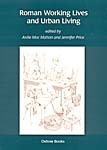
Format: Paperback
Pages: 232
ISBN: 9781842171868
Pub Date: 18 Aug 2005
Illustrations: b/w illus, 2 maps
Description:
The ordinary people who made up the largest section of the population in the cities and towns in the Roman world were largely ignored by contemporary writers and have often been marginalised in traditional studies of Roman urbanism, but research into their patterns of work and social interaction have increased markedly in recent years. This book has come out of a conference on 'Roman Working Lives and Urban Living' held at the University of Durham in 2001. The conference was planned as a forum for people researching urban space and architecture, commercial and retail structures, organisation of craft activity and social theory.
The twelve papers presented here have been organised into two categories: Urban living and the settings for working lives and People at work: Owners, and artisans, crafts and professions . The range of topics and variety of approaches in the papers emphasise the wealth of the material available, and it is hoped that this will stimulate further research into the lives of the 'silent voices' of Roman urban society.
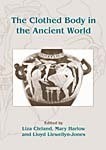
Format: Paperback
Pages: 192
ISBN: 9781842171653
Pub Date: 15 Apr 2005
Illustrations: b/w illus
Description:
The recent renaissance of interest in the history of dress and its cultural importance is celebrated in this collection of interdisciplinary essays. The sixteen contributors present on-going research into the study of the clothed body in ancient Egypt and the Aegean, Classical Greece, Rome and Late Antiquity. Through literary and artistic evidence and film, they discuss how dress articulates and defines an individual within his or her given society, at the same time highlighting common themes in scholarship, methodological differences between disciplines and periods, as well as contrasting definitions of what constitutes the clothed body.
Essays discussing Aegean Bronze Age fashions, costume design in filmed biblical epics, clothing in Aristophanic comedy, Greek and Roman female undergarments, the symbolism of the Roman toga, and the spectacle of images of Byzantine dress, are just some of the diverse subjects covered in this study.
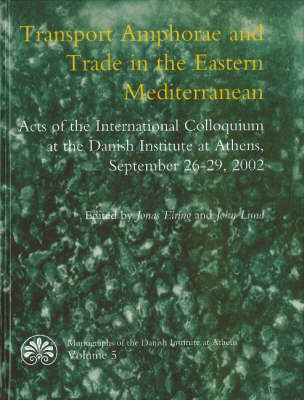
Format: Hardback
Pages: 300
ISBN: 9788779341180
Pub Date: 31 Mar 2005
Description:
As Peacock and Williams have noted, amphorae provide us "not with an index of the transportation of goods, but with direct witness of the movement of certain foodstuffs which were of considerable economic importance ..
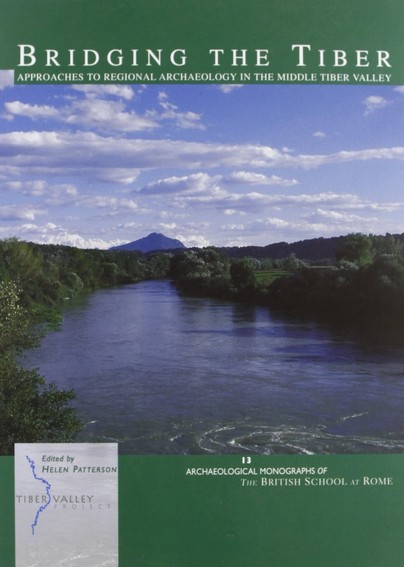
Format: Paperback
Pages: 336
ISBN: 9780904152401
Pub Date: 03 May 2004
Series: Archaeological Monographs of the British School at Rome
Illustrations: 128 b/w figs, 8 col pls, 14 tabs
Description:
Few river valleys can claim the historical importance of the Tiber, and an understanding of the river and its valley is key to an understanding of Rome and its place in the ancient world. When Rome was in its ascendancy, the Tiber became a vital route for communication and trade, but when Rome went into decline, the Tiber became a buffer-zone between Rome and Byzantium. This ebb and flow, with the associated reorganisation of social, political and economic life are themes central to any study of Roman civilisation.
The 19 papers published in this volume were first presented at two workshops at the British School at Rome, in 1997 and '98. These workshops came about as part of the Tiber Valley Project, which aims to examine the changing landscapes on both sides of the valley from 1000 BC to AD 1300. English and Italian text.
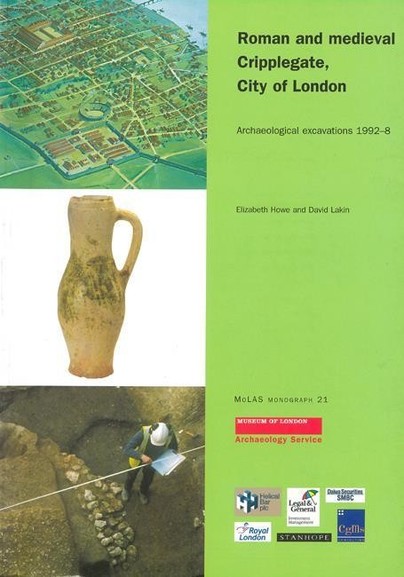
Format: Paperback
Pages: 160
ISBN: 9781901992427
Pub Date: 20 Mar 2004
Series: MoLAS Monograph
Illustrations: 93 b/w illus, 22 tables
Description:
This volume presents the results of work from five separate developer-funded excavations between 1992-8. Bronze Age field ditches were sealed by domestic buildings relating to the expansion of early Roman London after AD 70, contemporary with the timber amphitheatre located nearby beneath the Guildhall. The masonry fort was built in the early 2nd century AD and there was no evidence of a long-suspected predecessor.
The fort's buildings seem to have gone out of use around the end of the 2nd century AD and its southern defensive ditch was backfilled. Extensive reoccupation came with the establishment of burgage plots after AD 1050. Twelfth-century development included buildings with cellars and evidence of bone- and metalworking. Birds of prey and high-quality pottery and glass imply the presence of a high-status person or property in the 13th century, but little survies from after this time.
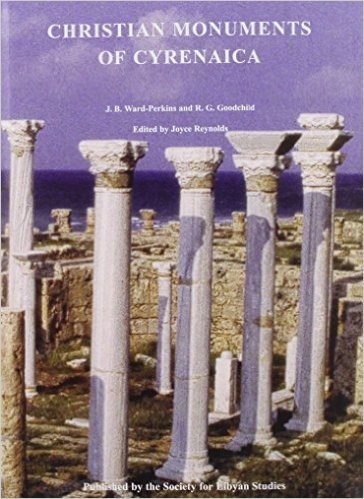
Format: Hardback
Pages: 462
ISBN: 9781900971010
Pub Date: 31 Dec 2003
Imprint: Society for Libyan Studies
Series: Society for Libyan Studies Monograph
Illustrations: 376 figs, 2 maps
Description:
Christian Monuments of Cyrenaica publishes archaeological studies undertaken between 1953 and 1971 by the late J. B. Ward-Perkins (d.
1981) and the late R. G. Goodchild (d. 1968). It presents Ward-Perkins accounts (mostly left in advanced draft form) of 44 monuments, 35 of them certainly churches, together with plans of each made by professional architects after survey on the ground, drawings of some details and a considerable number of photographs, together with a draft overview of the buildings techniques used. Colleagues have provided introductory notes on other major features of the buildings and drawn attention to some of the problems that they raise. They have also added a brief account of other Christian buildings reported since Ward-Perkins' last visit to Cyrenaica, both in Cyrenaica itself, the late antique province of Libya Superior, and in that area of the Western Desert which formed the closely-related province of Libya Inferior.The detailed evidence collected here represents a basis for the study of late antique and early Byzantine Cyrenaica of a quality and extent that has never been available before; and is all the more important because time and chance have now damaged some of that evidence. It also gives a quite up-to-date, although very summary account of new evidence awaiting serious study; which, we may hope, will lead to further advances in our understanding of the late antique and early Byzantine periods.
Papers of the Langford Latin Seminar 11
Caesar against Liberty? Perspectives on his Autocracy
Format: Hardback
Pages: 234
ISBN: 9780905205397
Pub Date: 17 Jul 2003
Imprint: Francis Cairns Publications
Series: ARCA, Classical and Medieval Texts, Papers and Monographs
Description:
Julius Caesar changed world history by inaugurating the transformation of the Roman Republic into the Roman Empire. This themed volume of PLLS handles the important and controversial problem of Caesar's own attitudes to 'liberty' and 'autocracy'. It contains revised, annotated and sometimes expanded versions of papers delivered at the Seventh Annual Langford Conference held at Florida State University, along with one supplementary contribution and English translations of two papers originally published in Italian.
The contributors constitute a distinguished international group of ancient historians.
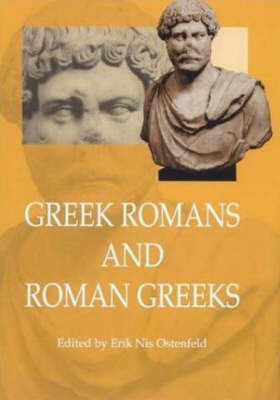
Format: Hardback
Pages: 287
ISBN: 9788772887968
Pub Date: 31 Mar 2002
Series: Aarhus Studies in Mediterranean Antiquity
Illustrations: illus
Description:
In its first three centuries the Roman Empire expanded politically at the same time as Greek culture was enjoying its heyday. This not only created tensions but also many productive impulses, which were mirrored in different branches of cultural life. In this collection of papers an assembled team of international scholars from the fields of philosophy, history of ideas, literature, epigraphy, archaeology and history explores the intercultural aspects of that thriving period.
Lisa Nevett's paper "Continuity and change in Greek households under Roman rule - the role of women in the domestic context" looks at the extent to which individual households and especially attitudes to women changed under Roman control. her evidence of patterns of social behaviour is archaeological and she concludes that a relaxation of restrictions on women took place from the later Hellenistic period onwards and therefore was a development which had begun prior to the arrival of the Romans. Paolo Desideri surveys Greek historiographical literature of the second century AD to find a key to Greek mentality and political ideology in the late Roman Empire. The Greeks did not have to give up their civilisation and identity; Appian and Cassius Dio even created the idea of a Hellenistic rather than a Roman Empire. Philip Stadter in "Plutarch's Lives and their Roman Readers" argues that Plutarch in "Lives is counselling the elite class of the Roman Empire, and that Tiberius Gracchus in particular would have provided a useful lesson, e.g. for the emperor Hadrian. Ewen Bowie explores the literary tales of Hadrian in Latin and particularly Greek poetry, including ancient sources for his preferences, his own compositions and some of the poems composed by the friends of ministers. Hadrian seems to have preferred Antimaches over Homer, admired Archilochus, Parthenius and short polymetric compositions.
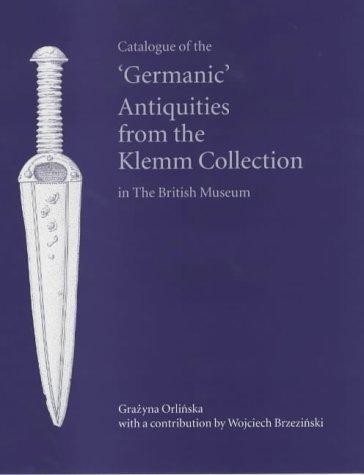
Format: Hardback
Pages: 174
ISBN: 9780714123189
Pub Date: 01 Dec 2001
Illustrations: plus 137 b/w pls, 5 b/w illus, 4 maps
Description:
Gustav Friedrich Klemm was a 19th century scholar and collector of antiquities. Part of his collection which was purchased by the British Musuem in 1868, forms the subject for this book. It largely comprises a catalogue of material from the Old Germanic Confederation, with objects dating from the Neolithic to post-Medieval period.
The catalogue is preceded by a discussion of the cultural and historical context of the objects and of the collection as a whole, along with some new analyses of items and comments on provenance and chronology. An important reference source since much of this material has not been properly published until now.
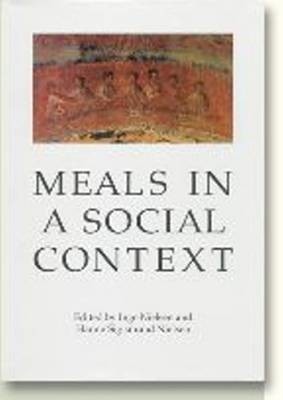
Format: Paperback
Pages: 248
ISBN: 9788779340060
Pub Date: 31 Mar 2001
Series: Aarhus Studies in Mediterranean Antiquity
Illustrations: illus
Description:
This collection of outstanding essays gives an in-depth look at the role of meals in creating a sense of family and community in the Mediterranean world in the Hellenistic and Roman periods. By looking at the dining habits of Greeks and Romans, Jews and Christians, Essenes and Therapeutes, an international cadre of scholars provides insight into how social mores and etiquette were passed on to children, how family life increased in importance for Christians, the conflict in styles when Greeks and Romans met, and how meals attained and sustained religious significance. Other topics include funerary banquets; the etiquette of a formal dinner; the position of women at meals; royal feasts; the development of the Eucharist as a separate ritual; the architecture of the Greek andron and the Roman triclinium, early synagogues and temples; the diets of each culture.
A separate chapter discusses the provision of food for the hungry and the public ownership of the sea, salt and fish.
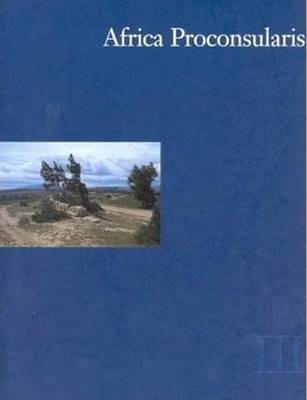
Format: Hardback
Pages: 339
ISBN: 9788772888286
Pub Date: 31 Dec 2000
Illustrations: illus
Description:
From 1987 to 1990, in collaboration with several Danish research institutes, the Tunisian Institut National de Patrimoine carried out an extensive archaeological survey in the valley known as the Segermes basin, in Tunisia. The results of that work are contained in three volumes entitled 'Africa Proconsularis' This volume reviews the information and looks at the historical conclusions.
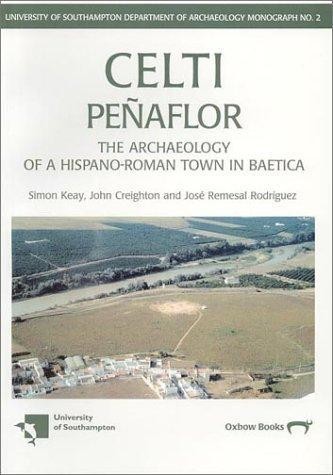
Format: Paperback
Pages: 224
ISBN: 9781842170359
Pub Date: 01 Dec 2000
Series: University of Southampton Department of Archaeology Monograph
Illustrations: many b/w figs
Description:
Southern Spain's archaeological record is a rich one but for the Roman period archaeological research has yielded limited results. The major settlement of Penaflor, the site of ancient Cleti, was selected for excavation for its good epigraphic and historical record and its excellent uncluttered stratigraphic sequence. The excavations aimed to establish, amongst other things, the date and cultural context for the first establishment of the site, the site'ss regional context and the Romanisation of the town during the late Republican period.
This book, which is part of a wider programme of publication, is intended to provide an overview of the project as a whole but excludes some of the more detailed analyses and appendices which are accessible in a University of Southampton web page.
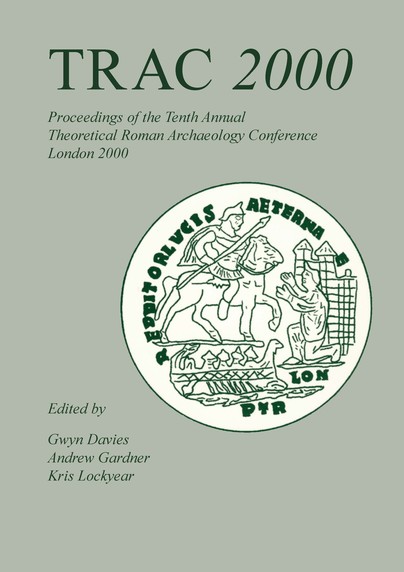
Format: Paperback
Pages: 176
ISBN: 9781842170434
Pub Date: 31 Jan 2000
Series: TRAC
Illustrations: b/w illus
Description:
This book contains thirteen papers on Roman archaeology from the tenth Theoretical Roman Archaeology Conference in London. The TRAC conference was held in April 2000, at the Institute of Archaeology and was divided into five different sessions. In the opening session, Representing Romans, the methodology of portraying the Romans to the wider world was explored.
David Clarke andFraser Hunter’s paper outlines the challenge of designing appropiate gallery displays for the new National Museum of Scotland. In his paper, Francis Grew discusses the development of Roman London. Garrick Fincham’s paper discusses the threat of overwhelming military intervention by the imperial power in colonial negotiations. Issues of ethnicity, gender, class and occupation within the later Roman army are addressed here. Miranda Green’s paper presents an important discussion of the nature of human/stag hybrids in Iron Age and Gallo-Roman iconography, and Gillian Hawkes presents an analysis of food procurement and preparation encountered in Roman Britain. Gilly Carr considers the role of body decoration and grooming, arguing that individuals in different areas of south eastern Roman Britain made different cultural choices to structure their ethnic identities. The final set of papers focused on Constructing Childhood in the Roman World, reconsidering some long-standing truisms regarding the status and treatment of children in the Roman context. John Pearce examines Roman infant burial and the role religion plays in burial ceremony.
Rome and Persia at War, 502-532
Format: Paperback
Pages: 301
ISBN: 9780905205489
Pub Date: 18 Oct 1998
Imprint: Francis Cairns Publications
Series: ARCA, Classical and Medieval Texts, Papers and Monographs
Illustrations: 14 maps and plans
Description:
The first modern account of the conflict between the eastern Roman Empire and the Sasanian kingdom. Greatrex traces the background to the war, investigating relations between Rome and Persia, the state of Roman defences in the East, and the chaotic situation in Persia at the end of the 5th century. He then examines the sources and the war itself, including the development of Roman defences, and the attempts by both powers to secure control of the Transcaucasian kingdoms.
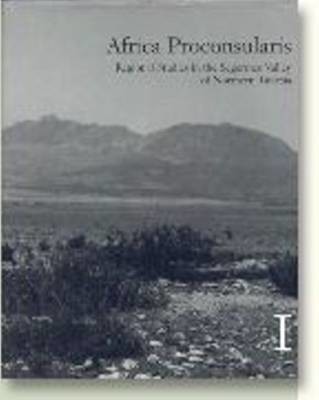
Format: Hardback
Pages: 799
ISBN: 9788772887401
Pub Date: 31 Mar 1998
Description:
What was the relationship between city and country in the Roman Empire? The writings which have been preserved show an enormous empire, divided into "cells", each with a city at its centre. But the written sources are few, and focus mainly on the cities of Italy; they do not tell what life was like in the Roman provinces.
Through systematic studies of the ancient landscape in Northern Tunisia, archaeologists have reconstructed the day-to-day history and economic activity of the rural population around the city of Segermes. Over 100 persons have been involved in this joint Danish-Tunisian project. The findings presented in these two volumes indicate that in Roman times, the valley was given over to intensive cultivation of wheat and olives, maintained at a high output level by means of extensive irrigation works. The population was dense and, surprisingly, reached its peak between 350 and 550 AD, a period of economic decline elsewhere in the Roman Empire.














